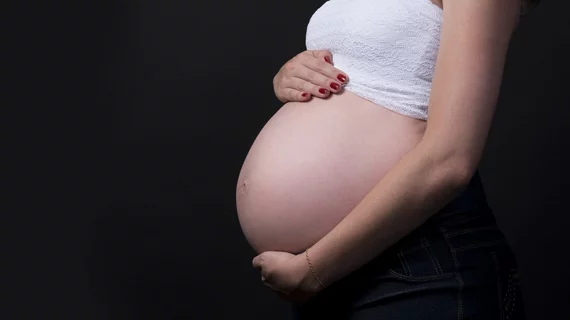A study equipping nurse midwives with handheld ultrasound probes to take “novice blind sweeps” of pregnant women found that an artificial intelligence model could use this data to accurately assess gestational age.
The study, published in the New England Journal of Medicine, can have major implications for low-resource settings, where the cost of traditional ultrasound machines can be prohibitive.
“These results foretell a future where all pregnant people — not just those who live in rich countries — can access the diagnostic benefits of obstetric ultrasound,” Jeffrey Stringer, MD, the director of the University of North Carolina's Division of Global Women’s Health and the person who came up with the idea for the project, said in a statement.
The study recruited 4,695 pregnant volunteers in North Carolina and Zambia. Each participant was evaluated by a certified, obstetrics-trained sonographer using an ultrasound machine to determine gestational age. During that same examination, the sonographer also collected blind sweep videos on a low-cost, battery-powered device and fed it into the AI model.
“When provided blindly obtained ultrasound sweeps of the gravid abdomen, our AI model estimated gestational age with accuracy similar to that of trained sonographers conducting standard fetal biometry,” wrote first author Teeranan Pokaprakarn, PhD, and co-authors.
A year and five months into collecting data in Zambia, researchers added novice blind sweeps and fetal measurements taken by nurse midwives as an additional evaluation of the deep learning model. This gave researchers the ability to evaluate how the model performed using images taken by nurse practitioners versus those taken by trained sonographers.
Data found that for the nurse midwives’ scans, too, deep learning algorithms deployed through a smartphone accurately determined gestational age.
“Model performance appears to extend to blind sweeps collected by untrained providers in Zambia using low-cost devices,” the study reports.
Traditionally, when ultrasound is unavailable, medical providers use self-reported last menstrual period to estimate gestational age. However, patient uncertainty as well as variation in individual menstrual cycles make it a best practice to use ultrasound in early pregnancy to confirm gestational age.
“Accurate estimation of gestational age is fundamental to quality obstetrical care. Providers use gestational age to interpret abnormalities of fetal growth, to plan referrals, and to decide if, or when, to intervene for fetal benefit.”
